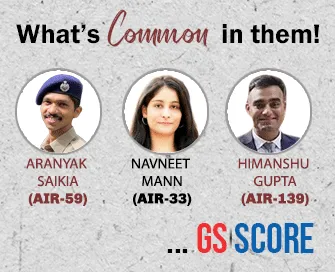

24th February 2025 (12 Topics)
Context
The Maharashtra government has submitted a proposal to the United Nations Educational, Scientific and Cultural Organization (UNESCO) under the theme ‘Maratha Military Landscape of India’, urging the inclusion of 12 forts in the prestigious World Heritage Sites, said an official statement. These include 11 forts in Maharashtra in Raigad, Rajgad, Pratapgad, Panhala, Shivneri, Lohagad, Salher, Sindhudurg, Suvarnadurg, Vijaydurg, Khanderi Fort, and one Jinji Fort in Tamil Nadu.
Chhatrapati Shivaji Maharaj (1630-1680):
- Early Life:
- Born: February 19, 1630, at Shivneri Fort (Pune District) to Shahaji Bhosle and Jijabai.
- He was influenced by his mother, Jijabai, who instilled a strong sense of culture and religion.
- He was raised by Dadoji Kondadeo, who educated him in military strategy, administration, and revenue systems.
- Shivaji’s paternal grandfather, Maloji, was a distinguished general and awarded Fort Shivneri for his service.
- Formation of the Maratha Kingdom:
- Independence: Established an independent kingdom by breaking away from the Bijapur Sultanate.
- Government: Created a strong and efficient administrative system with a well-trained army.
- Recognition: In 1674, he was formally crowned Chhatrapati at Raigad Fort.
- Contributions and Innovations:
- Father of the Indian Navy: He built a strong naval force, constructing forts along the Konkan coast to safeguard maritime routes.
- Shivaji was known for his guerrilla warfare tactics, also called "Ganimi Kawa", using surprise attacks and mountain forts to his advantage.
- He [romoted religious harmony, welcomed people from diverse religions into his administration, and treated women with honor.
- Language Promotion: He advocated for the use of Marathi and Sanskrit, replacing Persian and Arabic terms in official matters.
- Wars and Conquests:
- Early Campaigns: He captured Torna Fort in 1646 at age 16, beginning his military campaigns against the Bijapur Sultanate.
- Conflict with Bijapur:
- Battle of Pratapgarh (1659): Defeated Bijapur’s Afzal Khan, marking a significant victory.
- Capture of Panhala Fort (1660): Shivaji faced siege and later recaptured it in 1673.
- Mughal Empire:
- Shivaji initially allied with the Mughals but later rebelled, engaging in battles like the Battle of Surat (1664) and Battle of Purandar (1665), where he agreed to Mughal authority temporarily.
- Escape from Agra (1666): After being imprisoned by Aurangzeb, Shivaji escaped from Agra in 1666, eventually leading to peace negotiations.
- Battle of Sinhagad (1670): Recaptured the Sinhagad fort from the Mughals.
- Battle of Salher (1672): The first major Maratha victory against the Mughals.
- Conquests in Southern India:
- From 1674, expanded Maratha control over Khandesh, Karwar, and Kolhapur.
- Initiated a campaign in southern India, forming a treaty with the Qutubshah of Golkonda in 1677.
- Administration:
- Ashta Pradhan: A council of eight ministers responsible for various functions like administration, finance, and military.
- He introduced an efficient governance system with Sanskrit as the official language.
- Religious Policies: He encouraged religious tolerance and built alliances with Muslim states, incorporating them into his administration.
- Military Strategy and Organization:
- Guerrilla Warfare: He used the mountainous terrain to conduct surprise attacks.
- He built 240-280 forts (including Rajgad, Torna, Purandar) and maintained a strong naval presence, particularly along the Konkan coast.
- He established a Maratha navy with forts like Sindhudurg, recruiting both Hindus and Muslims for naval operations.
- Legacy:
- After his death in 1680, Shivaji’s kingdom was inherited by his son Sambhaji, who continued his father’s expansionist policies but was captured and executed by the Mughals.
- Rajaram (Sambhaji's brother) took over but was later forced to flee.
- Shahu, son of Sambhaji, later became Chhatrapati and the rise of the Peshwas began under Balaji Vishwanath in 1713.
What is World Heritage Sites?
|

